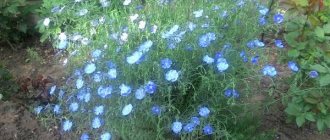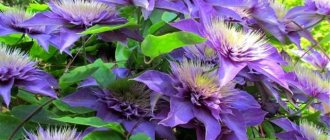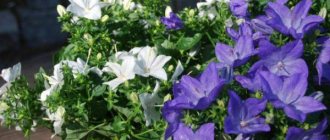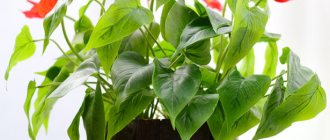Pyrethrum: varieties and varieties
Pyrethrum is often called Dalmatian chamomile. This perennial flower is quite compact, most often its height is just over 50 cm. There are more than 100 types of pyrethrum, but about 50 are grown in gardens. Pyrethrum blooms within a month from the very beginning of summer. Common types:
- Feverfew. It is a low dense bush, reaching 50 cm in height. The petals are very similar to those of chrysanthemums.
Feverfew
- Persian chamomile. A plant up to 60 cm high, with one or several baskets of inflorescences, most often pink.
Persian chamomile - Caucasian chamomile. Often found in nature in the Caucasus mountains. The peculiarity of this species is that all its parts contain poison. This poison is not dangerous for people and animals, but for insects it is fatal. It has a rich red color.
Caucasian chamomile
- Hybrid pyrethrum. All varieties descended from the above species are classified as hybrid pyrethrum. They come in different shades of flowers (from white to dark cherry) and in the structure of the petals.
Hybrid pyrethrum
Description of pyrethrum
The bushy herbal plant is called Persian, Caucasian or Dalmatian chamomile pyrethrum.
The names indicate the origin of the flowers from regions with warm climates. Pyrethrum is similar to garden or medicinal chamomile only in appearance, being a plant from the Asteraceae botanical group. Pyrethrum has also been compared to chrysanthemum for its scent and leaf shape. Pyrethrum petals can be white or various shades of red: pink, cherry, dark burgundy, and come in the shape of a ball or numerous tongues of varying lengths.
Pyrethrum bushes form upright growing stems that reach a height of 50 to 70 cm and grow quickly. The leaves are strongly dissected and are found in greater numbers in the lower part of the stem.
Pyrethrum, in addition to decorative ones, has properties to repel harmful insects, being a natural insecticide.
The component pyrethrum is included in the composition of remedies against mosquitoes, ants, cockroaches and ticks. On an industrial scale, the cinerary leaf variety of pyrethrum Dalmatian chamomile is used.
Planting a plant
Pyrethrum prefers sunny places for growth, but easily tolerates partial shade. It is also not particularly picky about soils. The only requirement is that the soil must drain well, because this perennial plant does not like stagnant water.
Pyrethrum is planted with seeds in open ground. Most often, planting is done in the spring after frosts have ended. After small bushes appear, they need to be planted at a distance of 20–30 cm.
Some gardeners plant flower seeds in pots and boxes in April for seedlings, and at the end of May they are planted in open ground in beds and flower beds.
Plant the plant in well-draining soil
This perennial blooms in the second year after planting in early summer.
Advice. If you want your flower to start blooming again in August, cut off all flower stalks after the first flowering.
Growing from seeds to seedlings
Over time, even perennial pyrethrum loses its decorative effect and usually does not grow for more than 6 years. It is better not to fight for its life, but to sow seeds to produce young bushes. But seeds collected independently do not reproduce all the characteristics of varietal pyrethrums. Therefore, it is better to purchase them in the store. To obtain faster flowering, it is recommended to first plant them as seedlings.
Soil and container
You can sow seeds in early March. Fill the planting containers with a mixture of peat and sand. Seeds can be mixed with dry sand. Distribute them over the surface, sprinkle with a layer of 3-5 mm of substrate, and spray with water from a spray bottle. Cover the container with film and place it in a warm, bright place for germination.
Seedling care
Pyrethrum should germinate at a temperature of +18..20°C. The shelter must be opened regularly to ventilate the crops and moisten the soil. When the shoots appear (after 1-1.5 weeks), the film can be removed. After the formation of 3-4 leaves, the seedlings are planted in separate pots and grown at a temperature of +20°C. 2 weeks before planting in open ground, seedlings should be gradually acclimated to fresh air. Take it outside every day, increasing the time spent each time.
Transplanting
You can plant seedlings only in May, when warm weather finally sets in. Select an area with loose, fertile soil for pyrethrum. Dry, sandy and poor soils should be avoided.
Prepare holes for seedlings. Their size should correspond to the root system of the pyrethrum along with the earthen ball. Make the distance between the holes 20-50 cm, depending on the type of plant. Remove the seedlings from the container (if these are peat pots, then plant them together). Place in the hole, cover with soil, compact it and water generously. For the first 10 days, seedlings need to be shaded from the scorching sun. Flowering from seedlings can be expected next year.
Plant care
Pyrethrum practically does not require care. In the early stages of growth, it is necessary to clear the bed of weeds, and during the process of growth and flowering, the plant must be watered. An adult crop suppresses weeds on its own.
After rains, it is recommended to slightly loosen the soil around the bushes to prevent a crust from forming.
Pyrethrum does not need regular watering: rainwater is enough for it
For the winter, the plant is pruned and covered with a layer of peat or spruce branches. In such conditions, the plant tolerates any winter well.
General description and characteristics
Pyrethrum has several names: chrysanthemum maiden, Matricaria exceptional, Dalmatian, Caucasian chamomile. Cultivated mainly as an annual. The height of the bushes varies between 20 centimeters and 1 meter.
The root system is powerful. The leaves are pinnately dissected, bright green. They give off a chrysanthemum scent. The buds are colored white, cream, yellow, pink. They bloom in late May or early June. Flowering lasts until frost.
Pyrethrum propagation
Pyrethrum, planting and caring for which, as we already know, does not cause any trouble, is just as easy to propagate. There are many ways you can use to increase the Dalmatian chamomile population in your garden.
Pyrethrum seeds
- Seeds.
- Dividing bushes. Immediately after flowering ends, you need to dig up the old bush. The soil from the roots must be carefully shaken off or washed. The bush needs to be divided into rosettes and planted separately from each other. Care for new bushes in the same way as any adult plant. Division must be carried out every two to three years to rejuvenate the bushes.
- Propagation by cuttings. Young basal shoots of pyrethrum can be used as cuttings for propagation. At any time in the summer, cuttings should be rooted in a shaded place, covered with film. This will prevent young plants from drying out.
Dividing a pyrethrum bush Advice. When pyrethrum is propagated by seeds, daughter bushes may lose their parental varietal characteristics. If you want to decorate your garden with new shades, this is the most suitable way, but if it is important for you to preserve the existing characteristics of the variety, propagate the plant in other ways.
Description
The name comes from pyretos, which translates into Russian as “fever”. Some species are actually used in medicine as powerful antipyretics. It was first mentioned in the articles of Dioscarides (1st century AD) as an effective medicine for headaches and arthritis. In the 17th century, the tanacetum flower was recognized as the best remedy for migraines.
Feverfew
People often confuse it with chamomile and call it chamomile because of its similarity with another species. Depending on the variety, the length varies from 5 (dwarf varieties) to 150 centimeters (tall varieties). Flowers can be either simple or double or semi-double. Various colors: yellow, red, crimson. They are grown in mixborders and flower beds, next to trees and other crops. Strengths include:
- A long flowering period – it pleases with bright colors all summer long.
- Unpretentiousness.
- Frost resistance.
If you're short on time or just getting started with flowers, planting and caring is the perfect solution. Visually, it looks like a chamomile and will appeal to fans of this culture. The difference is in the variety of colors and a more lush core.
Diseases and pests
Diseases overcome pyrethrum extremely rarely if a diseased plant is adjacent to it in the garden. And pests try to avoid this perennial. The only exception is black aphids, which are sometimes found on pyrethrum stems. To combat it, you need to use special preparations sold in any gardening store or remove the plant from the flowerbed.
Black aphid
Diseases
The plant is highly resistant to diseases. However, with improper care, insufficient or excessive watering, it can also get sick. The above-ground parts of the bush are affected by a fungal disease - gray rot. If a fluffy coating appears, you will have to remove the affected specimens and destroy them. The area where pyrethrum grew is treated with a fungicide.
Pyrethrum bush
Fusarium is another infectious disease. The pathogen penetrates through the root, affecting the vascular system of the flower. Unfortunately, it is impossible to cure the plant. It is taken out of the ground and burned. This way you can stop the further spread of the infection. The remaining bushes are sprayed with fungicide.
Among the dangerous pests are slugs that feast on the leaves of the plant, thrips and aphids. Slugs are collected by hand, plants with thrips are destroyed, and insecticides Biotlin or Actellik are used to control aphids. It is not always possible to get rid of aphids immediately, so spraying is repeated after a week.
Pyrethrum in landscape design
There are many uses for pyrethrum in landscape design. Pyrethrum is often used in carpet flower beds as an edging. In this case, the pyrethrum bushes are cut to the required height and are not allowed to bloom.
In addition to framing flower beds, this flower is also perfect for decorating borders. And its variegated flowers will decorate any bright flower beds and mixborders. You can create a separate bed with pyrethrum, choosing varieties of different shades, or you can create a flower fireworks display in combination with carnations, bells and foxgloves.
Pyrethrum in landscape design
This is the most suitable plant for creating a country style garden. And next to ornamental shrubs and under trees, it not only looks great, but also takes root well.
Pyrethrum is good not only in flower beds. They decorate balconies and terraces. This multi-colored chamomile is also irreplaceable in cuts when making bouquets.
Pyrethrum is one of the most unpretentious perennial flowers, which will appeal to many gardeners, because it requires virtually no care, but pleases with its colors for many years. If you are looking for a new flower for your garden, don't hesitate. Pyrethrum will fit perfectly into any landscape design and decorate any flower garden.
Useful properties of pyrethrum
In the old days, Dalmatian chamomile was used to lower fever, eliminate inflammation and headaches. It has been proven that this flower has properties similar to aspirin.
In the 1980s, scientists noted feverfew as an effective substance in the fight against migraines. It was said that the powder of this plant relieves severe and frequent headaches much faster than expensive medications. This was explained by the fact that the flower contains parthenolide, which helps block the synthesis of serotonin. And, as you know, excessive content of this component in brain cells and blood vessels is recognized as the cause of migraine formation.
In addition, Dalmatian chamomile blocks the production of histamine, prevents the formation of blood clots in blood vessels, and has antimicrobial and anti-allergenic properties. The leaves are used to create applications against arthritis and rheumatism, and are used to treat asthma and relieve pain during the menstrual cycle.
In combination with medications, feverfew eliminates allergic manifestations of dermatitis and psoriasis.
This plant has an unusual appearance and medicinal properties, which attracts a large number of gardeners. Decoctions from this flower are often given to young children with allergies accompanied by severe rashes.
Types of pyrethrum: photo
Growing
Reproduction
Reproduction of Caucasian chamomile is possible in several ways: • by planting seeds, • using petioles, • dividing bushes.
Due to repeated pollination of flowers, newly formed pyrethrum seeds lose their species characteristics, germinating in different shapes and colors, so it is necessary to cut off the wilted parts to avoid self-seeding.
In early May, seeds are planted in containers containing sand and peat. After the end of the frost period and the appearance of the first few leaves, pyrethrum is planted individually.
Caucasian chamomile actively grows in width due to shoots, and to maintain an attractive appearance, every four years it is dug up, divided into several parts and the newly formed chamomiles are planted in prepared, carefully watered holes.
Flower propagation system by cuttings: from May to April, young shoots are cut into pieces and placed in a dark place in loose soil.
Then, over a period of up to three weeks, the plants are regularly sprayed and ventilated, waiting for the day when the shoots become stronger and become ready for further replanting. To keep the soil moist, cover it with film.
Types and varieties of pyrethrum with photos and names
About 100 species live in the natural environment, and almost half of them are cultivated. Let's look at the most popular ones.
Pyrethrum parthenium
Pyrethrum parthenium photo
Tanacetum maidens is grown as an annual or perennial. The height of the branched bush is 50-55 cm. The leaves are colored light green with a yellowish tint. Inflorescences can be simple or double. Painted white or pale yellow. The diameter of the inflorescence is up to 4 cm.
Varieties:
- Goldball – stem height reaches 30 cm. The inflorescences are bright yellow;
- Double White – small, double flowers – like white clouds;
- Schneeball is a miniature bush about 20 cm high, the flowers are small, white in color with a yellow center.
Pink pyrethrum or Persian chamomile Pyrethrum roseum
Pink pyrethrum or Persian chamomile Pyrethrum roseum photo
The plant is 50-70 cm high. About 5 inflorescences with a diameter of up to 6 cm appear on each peduncle. The color is pink. In varietal plants, the diameter of the inflorescence reaches 12 cm.
Known varieties:
- Robinson - color from dull to bright pink;
- James Kelver - the inflorescences are red;
- Brenda - dense inflorescences have a scarlet tint;
- Vanessa - double inflorescences, have all shades of pink.
Red feverfew or Caucasian chamomile, bright red tansy Pyrethrum coccineum
Red feverfew or Caucasian chamomile, bright red tansy Pyrethrum coccineum photo
The plant is about 60 cm high. The core is yellow, the petals are various shades of red.
Pyrethrum corymbosum
Pyrethrum corymbosum photo
It has a stem 1.2 m high. Very similar to field chamomile. Flowers are collected in loose clusters.
Pyrethrum macrophyllum
Pyrethrum macrophyllum photo
Numerous small flowers are collected in an inflorescence, forming a ball. The flowers are white at first but become yellow-brown over time.
Botanical description, photo
Pyrethrum is an open ground plant, a representative of the large family of Asteraceae or Asteraceae. Its natural habitat occupies vast areas of Eurasia, as well as North America. It is represented by more than a hundred varieties, the common feature of which is chamomile-shaped inflorescences. At the same time, it has a more magnificent core, and its petals are painted in a wide range of bright colors, characteristic of the aster family.
Most varieties are perennial crops, but annual plants are also found among them.
The root system is fibrous, well developed. The shoots are erect, often slightly branched, of varying heights, from dwarf species to large ones. A leaf rosette of the basal type is formed at the base. Only a few small leaves bloom on the stem itself, arranged in a rare order. The inflorescence is a medium-sized basket, usually up to 6 cm in diameter. It combines reed and tubular petals, the first of which are located along the edge and are painted primarily in shades of pink, but can be white, crimson or lilac. The second ones are concentrated in the center, always yellow.
The flowering perennial decorates the flower garden with its cheerful variegation throughout the first half of summer, after which it forms pale brown achenes with a lobed or jagged crown. Seeds retain good germination for up to 3 years.











